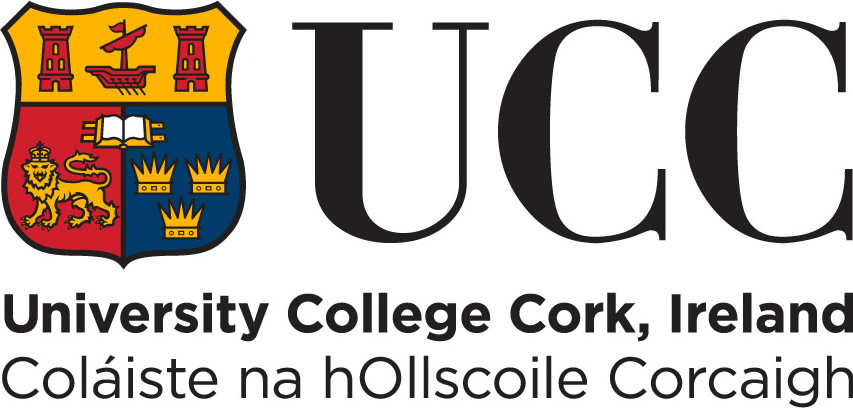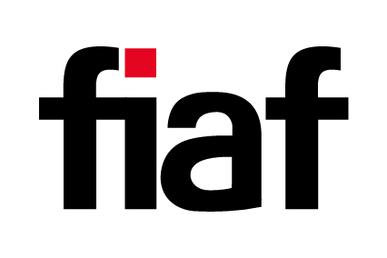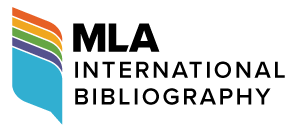Rendering (the) Visible II: Figure
Georgia State University, 6–8 February 2014Laurel Ahnert and Justin Horton
In February 2014, Georgia State University’s Moving Image Studies programme hosted its second biennial conference, Rendering (the) Visible II: Figure, drawing scholars from across the United States, Romania, Canada, Portugal, the United Kingdom and Australia. Convened by Georgia State faculty members Jennifer M. Barker, Alessandra Raengo and Angelo Restivo, the conference sought to explore the growing interest in the figural as a productive shift away from representation and signification in film and media theory. The word “the” appears parenthetically in the title to invoke Paul Klee’s assertion that painting should aim “[n]ot to render the visible, but to render visible”, which becomes a central provocation for Gilles Deleuze in his Francis Bacon: The Logic of Sensation (40). Whereas the previous conference had been concerned with the implications of the digital turn for theories of visuality, this most recent colloquium turned its attention toward the gestural, the affective and the rhythmic.
The figural, then, invites us to enquire into the relationships between sensation and representation. Deleuze’s aforementioned text on Francis Bacon was a frequent point of reference for the presenters, as was Jean-François Lyotard’s Discourse, Figure. Deleuze shifts our attention from the figure to the figural, arguing that the task of art is to capture affective forces and make them visible. Similarly, Lyotard uses the figural to describe the opacity within an artwork that escapes language and disrupts signification from within. Placing Lyotard and Deleuze in conversation, D. N. Rodowick’s Reading the Figural, or, Philosophy After the New Media was another recurring reference point, offering the figural as the blurred meeting point between semiotics and materiality in aesthetics. Thus, a theoretical through line developed throughout the weekend as the assembled scholars worked to illuminate and complicate these well-known understandings of the figural. The major questions informing the papers presented included: How might we think of images beyond their seeming representational fixity? What is the quality of “imageness”? What are the powers and capacities of audiovisual art? How can we as critics write about the nonvisual dimensions of the sensory experience? What is, in the words of Deleuze, “the logic of sensation” of cinema specifically and of art generally? How might cinema help us (re)define the distribution of the sensible?
The conference began with an evocative selection of experimental works curated and introduced by Timothy Murray, author of Digital Baroque: New Media Art and Digital Folds and founder and curator of the Rose Golden Archive of New Media Art at Cornell University. In his remarks, Murray stressed that the Rose Golden holdings are, as the name implies, more an archive than a museum because, rather than merely preserving a new media object as such for later exhibition, it supplements it with documentary footage of people interacting with it and with supporting materials such as production documents, catalogues and manuscripts. Often site-specific, available for only limited runs, or designed for use with now obsolete technologies, many new media works are quite ephemeral. Murray therefore showcased rarely seen works in their entirety as well as excerpts from video footage documenting the circumstances of a work’s specific exhibition. Ranging from 1975 to the present and across varying media, Murray’s selections were characterised by their “transfiguration” of viewing, soliciting the spectator’s tactile and mobile participation with the work.
For instance, in Ryoji Ikeda’s Test Pattern (2008), a video installation in which viewers move about freely in a space in which black and white lines strobe across a floor consisting of video monitors, participants are seen walking, dancing and even lying down across the ever-changing space. The recording shows the participants’ emergent relationship with the space and its fluctuating patterns of light and sound. A similar dynamism emerges in Sara Hornbacher’s A Thousand Plateaus (2001), named of course after the Deleuze and Guattari treatise of the same name, wherein spectators’ movements trigger different sounds and images on three massive video screens. Another standout work was Elle Mehrmand and Micha Cárdenas’s mixed performance piece, Technesexual (2009), wherein the sexual acts of the on-stage performers are rendered as intercourse between mythical creatures on a video screen above, a situation that bears a striking resemblance to, and may indeed have inspired, the motion capture sequence in Leos Carax’s recent film Holy Motors (2013). Uniting each of these curated pieces is the impulse to “render visible” aspects of sensory experience that are invisible or that otherwise elude representation.
A similar focus on interaction, immersion and aesthetics was at the core of the keynote address given by Pasi Väliaho (Goldsmiths, University of London). In line with the themes of the conference, Väliaho’s talk, titled “Figures of Resilience: Gesture, Screen, Power”, engaged with the figural (i.e. gestural and contingent) nature of video games. He argued that video games may give us insight into the contemporary neuro-biopolitical economy, which reimagines the subject as entirely malleable, anticipating and adapting to circumstances much like the video game user. In essence, this new “cerebral subject” is figural rather than fixed, defined by the plasticity of the brain more than the brute matter of the biopolitical body.
Väliaho reminded us that we relate to games proactively; we learn the rules and begin to anticipate events before they happen. This is a process that is mapped onto the brain itself, changing the synaptic connections on its surface. In this way video games link together bodily gesture, perception and cerebrality. This same logic, argued Väliaho, applies to Virtual Reality (VR) software designed for therapeutic use by veterans suffering from Post-Traumatic Stress Disorder, technology of the sort featured in Harun Farocki’s video installation series titled Serious Games (2009–2010). This VR technology uses the logic of embodied interactivity in order to unlock and reanimate subconscious traumas that can then be modulated through a process of narration and “play” in an effort to rewire the brain. As Väliaho contended, these VR interventions are a form of psychological management, designed to “reprogramme” the users by decoding and recoding the cerebral field, thereby managing the subject from within. He connected the work these “serious games” perform with biopolitical discourses of infection and immunity. Here the psyche, like the immune system, must battle against threats to the body by developing its own immunising forces, destroying neural pathways and rebuilding new ones through constant modulation and adaptability. The brain’s plasticity, therefore, is like the plasticity of the contemporary body politic: in order to be resilient it must continuously modulate, transform and adapt to past and future crises.
The keynote capped a diverse weekend of rigorous scholarship in film and visual studies. While this report cannot hope to do justice to the range and complexity of the scholarship presented at the conference, it is worth elaborating on a few of the themes that emerged over the course of the weekend. Several papers, including one presented by Ágnes Pethő (University of Transylvania), commented on the trend sometimes labelled “slow cinema”, asking the question: “What happens when nothing happens in a film?” For Pethő, the recurring tableau-like images that characterise these films become instances of “cinematic pictorialism”. Taking the theme of slow cinema in an alternative direction, Adam Cottrel (Georgia State University) argued that such films involve a kind of “political endurance”, retaining an almost zen-like minimalism in the face of political fatigue.
The political and not merely aesthetic implications of the figural formed an important and recurring theme. For example, Elena del Río (University of Alberta) used Battle in Heaven (Carlos Reygadas, 2005) to show how film can materialise Agamben’s argument that the sovereign state shows itself only through the act of abandonment. The protagonist, who represents bare life in the eyes of the state, is transformed into pure immanence by the film through its extended scenes of nakedness and vulnerability. This is the power of art, argued del Río: the ability to produce resistance out of bare life itself. In a similar vein, Alessandra Raengo (Georgia State University) argued that race, specifically blackness, is always already figural because it exceeds and agitates representation from within. The black body accumulates an overwhelming excess of affective energy, causing a rupture in the distribution of the sensible. Likewise, Amy Herzog’s (Queen’s College, CUNY) presentation examined the political implications of Shane Carruth’s peculiar sci-fi romance Upstream Color (2013), noting that the circulation of the film’s unusual parasites is ultimately a function of the flows of exchange, which over the course of the film traverse plants, animals and humans—all caught within the clutches of capital.
Upstream Color points to other recurring concerns such as the nonhuman, contamination and molecular transcorporeality in visual culture. For example, in his equally deft analysis of Upstream Color, Steve Spence (Clayton State University) discussed the propensity of objects and people to entrain with one another involuntarily. Human entrainment refers to phenomena such as hormonal synchronicity among women or unconscious rhythmic mirroring among individuals in a crowd. As it plays out in the film, the parasites cause entrainment among their human hosts, giving them superhuman powers that simultaneously threaten the boundaries of the normative, impervious male subject. Similarly, in his paper on crowd simulation software, Drew Ayers (Northeastern University) explored the phenomenon of “the digital multitude” in contemporary action films like Rise of the Planet of the Apes (Rupert Wyatt, 2011). These digitally simulated crowds or swarms possess self-organising intelligence that operates according to a viral computer logic that moves and evolves apart from human intention, signalling an uncanny threat to the human.
Given that the figural is said to make visible that which is invisible, another common concern in a number of the papers was the play between presence and absence. For instance, Kristopher Cannon (Northeastern University) took as his subject a controversial breast cancer ad campaign that depicts women who have undergone mastectomies but whose scars have been pixilated and blurred to cover over the wounds. Cannon argued that the pixel, as a discreet, formless unit, marks the difference between presence and absence in the digital image, a placeholder for the multiple virtual possibilities of the image that otherwise remain unseeable. The image thus suggests simultaneously healthy and removed tissue, representing gazes that are potentially both erotic and clinical. Arzu Karaduman (Georgia State University) considered a similar question from the realm of absence and invisibility, arguing, by way of Akira Muzita Lippit’s Atomic Light (2005), for the figural as a kind of “avisuality”. This figural avisuality, claimed Karaduman, is made manifest in Enter the Void (Gaspar Noé, 2009), wherein the spectral camera suggests a form of extreme subjectivity, the visual here always gesturing toward the seeing subject who remains off-screen.
Finally, many presenters grappled with how a theoretical shift in emphasis to the figural complicates or redefines how we conceive of the cinematic and, consequently, how this impacts on the role of the film scholar. Such questions bookended the conference, which opened with a paper by Jordan Schonig (University of Chicago) that elaborated on the trend toward “figural criticism” in film studies. Figural criticism, of which Nicole Brenez’s book on Abel Ferrara is emblematic, deemphasises structuralist and narrative analysis and instead attends to flows, associations and assemblages within films. In this form of criticism, the image or the gesture is never isolated for meaning but for its effects and affects. The conference closed with a panel that included Angelo Restivo (Georgia State University) considering the television series Breaking Bad (2008–2013)through a cinematic lens. Drawing a connection to Buñuel, he argued that the show exhibits a certain surrealist inclination with regard to the objects it displays. The repeated use of still-life tableaux and the violent reconfiguration of bodies and objects in space through narrative events materialise the contemporary structure of feeling that characterises our current media, social and political milieu. Through this surrealist lens, Breaking Bad turns into a vast field of play wherein TV becomes strange and estranging. This visual surplus of the show reflects our contemporary experience of living with the continual play of commodity capitalism.
We would like to conclude by giving an overall impression of Rendering (the) Visible II: Figure as an event. In addition to the thought-provoking scholarship on offer, one of the benefits of this conference was its relatively small size, which created a genuine sense of collegiality. Presenters frequently cited papers given earlier in the weekend, and almost all of the attendees, many of whom attended the inaugural Rendering conference, were on a first-name basis by the conference’s end. Each day culminated in a reception at Georgia State’s Digital Arts and Entertainment Lab, and on Saturday attendees gathered for an impromptu dinner at the home of one of the members of the host committee. There, the generosity of the event carried over, as senior scholars, junior faculty and graduate students helped prepare the meal and discussed into the night the topics that emerged over the course of the conference. The combination of a themed conference and this conviviality resulted in a collaborative atmosphere of scholarly give-and-take with everyone working on related problems at the intersection of art, politics and philosophy.
References
1. Battle in Heaven. Dir. Carlos Reygadas. Gussi Films, 2005. Film.
2. Breaking Bad. Prod. Vince Gilligan, Sony Pictures Television, 2008–2013. Television.
3. Brenez, Nicole. Abel Ferrara. Chicago: U. of Illinois P., 2007. Print.
4. Deleuze, Gilles. Francis Bacon: The Logic of Sensation. Minneapolis: U. of Minnesota P., 2003. Print.
5. Enter the Void. Dir. Gaspar Noé. Wild Bunch Distribution, 2010. Film.
6. Holy Motors. Dir. Leos Carax. Indomina Group, 2012. Film.
7. Lippit, Akira Mizuta. Atomic Light (Shadow Optics). Minneapolis: U. of Minnesota P., 2005. Print.
8. Lyotard, Jean-François. Discourse, Figure. Minneapolis: U. of Minnesota P., 2011. Print.
9. Murray, Timothy. Digital Baroque: New Media Art and Cinematic Folds. Minneapolis: U. of Minnesota P., 2008. Print.
10. Rise of the Planet of the Apes. Dir. Rupert Wyatt. Twentieth Century Fox, 2011. Film.
11. Rodowick, D. N. Reading the Figural, Or, Philosophy After the New Media. Durham, NC: Duke U.P., 2001. Print.
12. Serious Games. Dir. Harun Farocki. Harun Farocki Filmproduktion, 2009–2010. Film.
13. Technesexual. Elle Mehrmand and Micha Cardenas. 2009. Digital Media/Live Performance.
14. Test Pattern. Ryoji Ikeda. 2008. Digital Media/Live Performance.
15. Upstream Color. Dir. Shane Carruth. ERBP, 2013. Film.
Suggested Citation
Ahnert, L. and Horton, J. (2014) Rendering (the) Visible II: Figure, Georgia State University, 6–8 February 2014. Alphaville: Journal of Film and Screen Media, 8, pp. 116–121. https://doi.org/10.33178/alpha.8.10.
Laurel Ahnert is a PhD candidate in the Moving Image Studies program at Georgia State University. Her research interests include documentary film, theories of affect and embodiment and film phenomenology. Her writing on documentary film has appeared in InterDisciplines: Journal of History and Sociology.
Justin Horton is a PhD candidate in Moving Image Studies at Georgia State University where his research focuses on film and philosophy, sound studies, and phenomenology. His work has appeared in Cinephile and Cinema Journal and is forthcoming in an anthology on transmedia storytelling.









